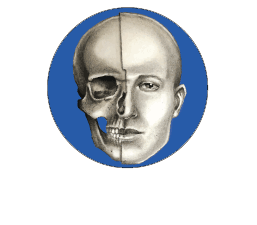Discipline Overview:
Forensic art is art used by law enforcement in Criminal Investigations. It is used as an investigative tool to assist in identifying suspects who have offended against somebody and for identifying human remains that have yet to be identified.
The categories of forensic art services consist of the following:
Composite Drawing: drawing the likeness of a suspect in a crime from a witness memory
Age Progressions: drawing a missing person or criminal suspect several years after they’ve been seen last to demonstrate how they may appear after having aged.

Forensic Art Subcommittee Chair
Duncan Way, ON, Canada
Committee MembersReturn to Forensic Disciplines
Postmortem Restorative Drawings: drawings made from fleshed unidentified human remains that may have suffered trauma or decomposition in an attempt to identify the person.
2 Dimensional Reconstructions: Drawings made from skeletonized unidentified human remains in an attempt to identify the person.
3 Dimensional Reconstructions: Clay or 3D digital images made from skeletonized human remains in an attempt to identify the person.
Forensic Artists may be asked to assist or work with demonstrative imagery outside of these categories as well.
Qualifications:
University of Dundee Scotland has a Forensic and Medical Art degree program. In the USA, skills are achieved through workshops and training from senior forensic artists around the country. There is presently no college level certification for forensic art in the USA.
The only internationally-recognized certification for forensic art is through the IAI.
Certification:
Certification is one mechanism to demonstrate competency and proficiency in a specific DME specialty as measured by relevant scientific communities. The certification process is regulated and controlled by written policies, procedures, and testing by a board of trained, vetted and competent DME scientists. There are many DME certification options, including:
Resources:
- Forensic Art and Illustration - Karen T Taylor
- Forensic Facial Reconstruction - Caroline Wilkinson Craniofacial Identification Caroline Wilkinson
- The Mindful Interview Method - Gil Zamora
- Craniofacial Anatomy and Forensic Identification - Gloria Nusse
- Reading the Skull: Advanced 2D Reconstruction Techniques - Natalie Murry
- Digital Forensic Art Techniques - Natalie Murry
- The Police Composite Sketch – Stephen Mancusi
- Composite Images – Rainer Wortman
- Facial Geometry – Robert M George
- Facial Reconstruction for Artists – Jan Flood
- Making Faces – John Prag & Richard Neave
Websites:
- Faselinks.com
- Karenttaylor.com
- Nataliemurry.com
- Forensicsculptor.com
- Forartist.com
- Stuartparks.com
- Txst.edu/anthropology/facts.html
Journals:
There are no journals specifically directed towards forensic art. The IAI’s JFI and ID News have articles written by our artists on occasion.
Organizations relevant to this discipline:
- International Association of Craniofacial Identification
- American Academy of Forensic Science